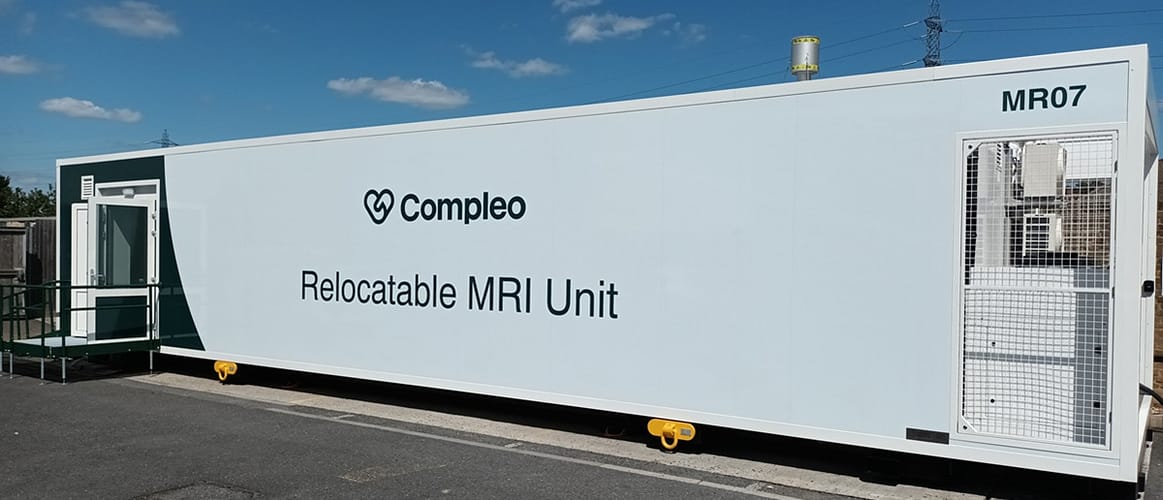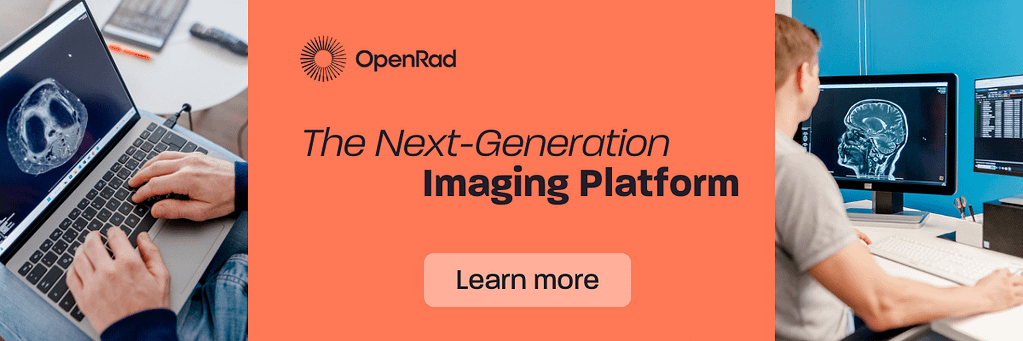Mobile imaging is at the forefront of technological advancements in radiology transformation—a revolutionary approach that brings diagnostic capabilities directly to the point of care. Let’s explore the status quo.
📖 Author: Emmanuel Anyanwu | Alberta Health Services, Canada
Mobile imaging has emerged as a game-changing solution, bringing diagnostic capabilities directly to the bedside, emergency room, or remote locations.
Mobile imaging refers to the use of portable imaging devices and technologies to perform diagnostic imaging procedures outside of traditional radiology departments.
These compact and versatile systems enable healthcare providers to conduct imaging studies at the patient’s bedside, in emergency settings, or in remote locations—thereby facilitating rapid diagnosis and treatment.
Areas & modalities
Mobile imaging encompasses a diverse range of applications and modalities, including:
- Mobile X-ray: Mobile X-ray refers to the use of portable X-ray machines that can be transported to various locations, including operating rooms, trailers, emergency departments, ICU, nursing homes and ambulances. These devices offer flexibility and versatility, allowing healthcare providers to obtain diagnostic images quickly and efficiently.
- Portable ultrasound: Portable ultrasound devices that connect to mobile devices via USB or wireless technology have become increasingly popular in various clinical settings. These handheld devices are used for point-of-care ultrasound (POCUS) examinations by clinicians, emergency physicians, and other healthcare providers to perform real-time ultrasound examinations at the bedside to diagnose different conditions, including deep vein thrombosis (DVT), abdominal aortic aneurysms (AAAs), and musculoskeletal injuries, as well as use for obstetrical scans.
- Augmented Reality (AR) for surgical planning: Augmented reality technologies integrated with mobile devices can assist surgeons in preoperative planning and intraoperative guidance. By overlaying medical images, such as CT or MRI scans, onto the patient’s anatomy in real-time, AR can help surgeons visualize critical structures, plan incisions, and navigate complex surgical procedures more accurately.
Advantages of mobile imaging
The adoption of mobile imaging offers several compelling advantages for healthcare providers and patients alike:
- Enhanced accessibility: Mobile imaging brings diagnostic capabilities directly to the point of care, eliminating the need for patient transport and reducing delays in diagnosis and treatment. This accessibility is particularly beneficial for critically ill or immobile patients who cannot easily be transported to radiology departments.
- Rapid diagnosis: Mobile imaging enables rapid assessment and diagnosis of acute conditions, facilitating prompt initiation of appropriate treatment interventions. This speed is critical in emergencies, where timely diagnosis can significantly impact patient outcomes.
- Improved patient comfort & safety: Conducting imaging studies at the bedside enhances patient comfort and safety by minimizing patient movement and reducing the risk of complications associated with transportation, such as dislodgement of medical devices or exacerbation of injuries.
- Quality of care: Timely access to diagnostic imaging improves patient outcomes by facilitating early detection and intervention for acute conditions such as traumatic injuries, strokes, or pulmonary embolisms.
- Cost efficiency: Mobile imaging units like trailers offer a cost-effective alternative to conventional imaging facilities, as they require lower infrastructure investment and operational overheads. Additionally, they reduce healthcare expenditures associated with patient transfers, ancillary services, and hospital stays.
Mobile imaging trends
As technology continues to evolve, several trends are shaping the future of mobile imaging:
- Integration with telemedicine: The integration with telemedicine platforms enables remote interpretation of imaging studies by radiologists and specialists—facilitating virtual consultations and extending diagnostic expertise to underserved areas.
- Advancements in portable technologies: Ongoing advancements in portable imaging technologies, such as handheld ultrasound devices, trailers with mobile modalities and miniaturized X-ray systems, are expanding the scope of mobile imaging applications and enhancing diagnostic accuracy and efficiency.
- Artificial Intelligence (AI) integration: The integration of AI algorithms with mobile imaging devices holds the potential to automate image acquisition, analysis, and interpretation—thereby augmenting diagnostic capabilities and improving workflow efficiency.
- Point-of-care testing: The convergence of imaging and point-of-care testing technologies enables comprehensive diagnostic assessments at the bedside—facilitating rapid decision-making and personalized treatment strategies.
Mobile imaging represents a paradigm shift in healthcare delivery, empowering providers to deliver timely and high-quality care directly at the point of need.
By leveraging portable diagnostic imaging devices, healthcare organizations can improve accessibility, efficiency, and patient outcomes—ultimately transforming the way diagnostic imaging is conducted and accessed.
As mobile imaging technology continues to evolve and integrate with emerging trends such as telemedicine and artificial intelligence, its role in modern healthcare will only become more prominent, shaping the future of diagnostic medicine.
—
What is your experience with mobile imaging? Share your thoughts via the comment section below.
Want to join a great team? Check out our careers section. We are always looking for outstanding talent—from application specialist to software developers.
📷 Photo credits: daniela-mueller.com


